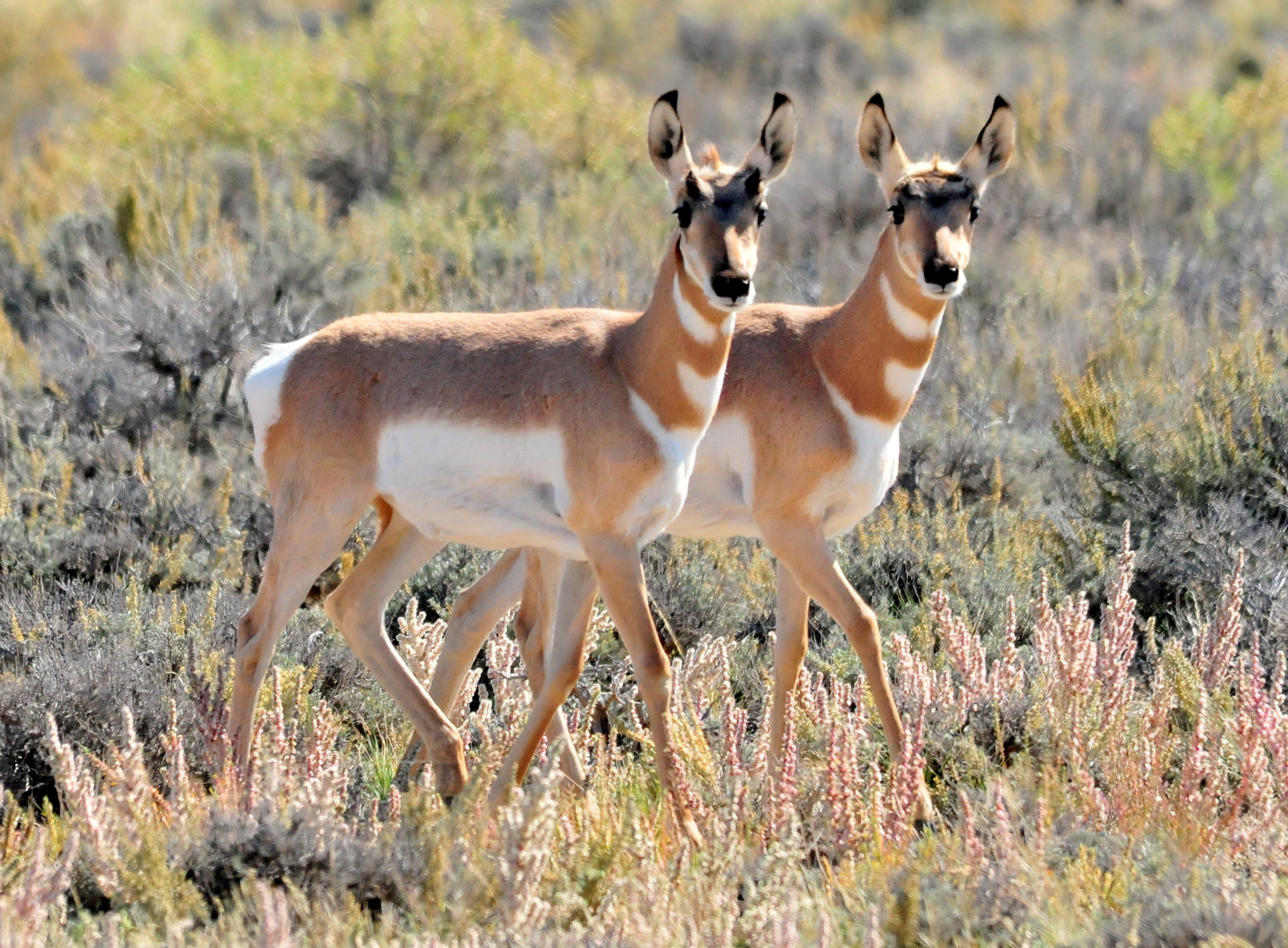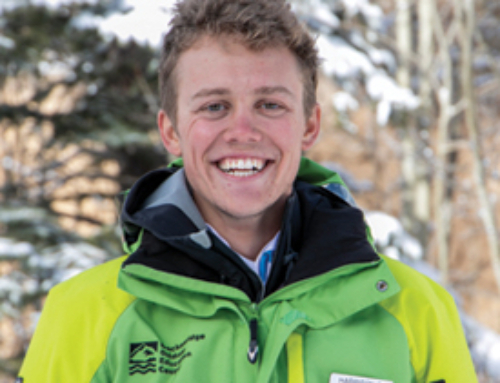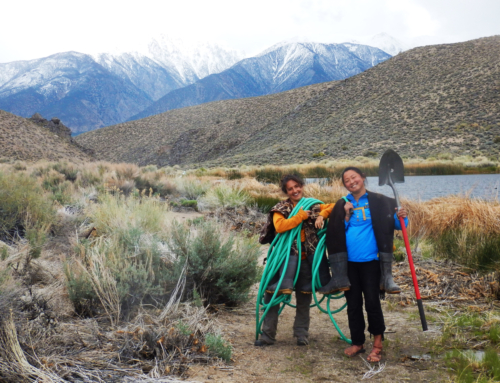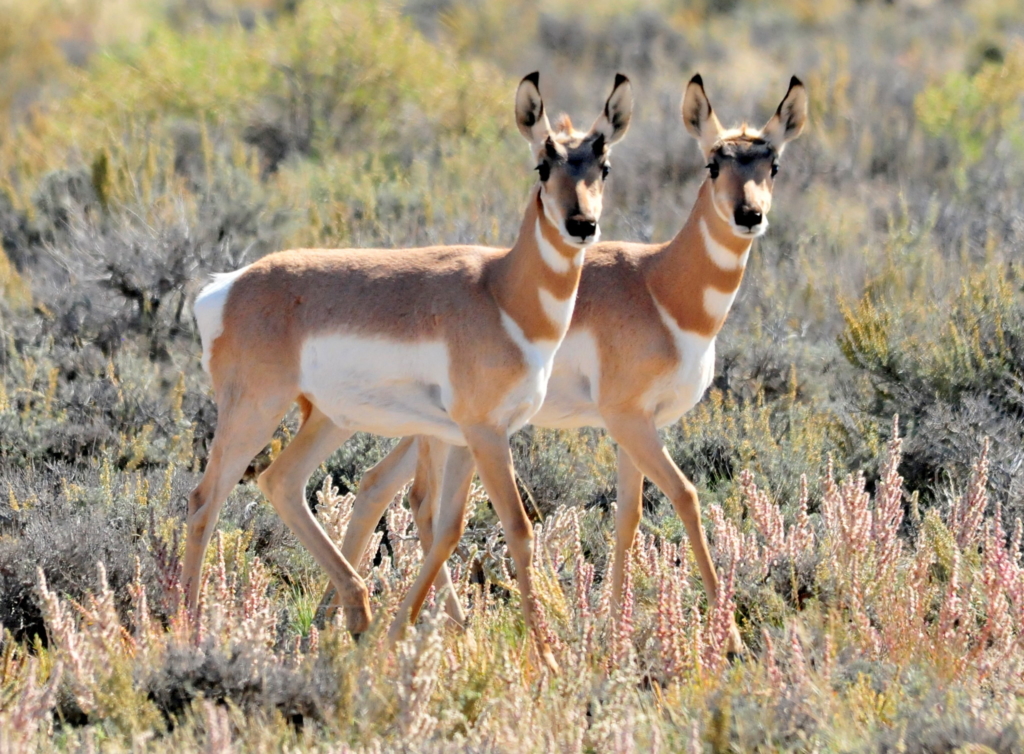
Twin Pronghorn Fawns, by Tom Koerner, USFWS
You’re driving east from Bridgeport through the winding Aurora Canyon Road, through high desert gullies and over hills with vast scenic vistas. You’re nearing Bodie State Park and suddenly, the muted green hillsides tingle with small movements. You slow to a halt on the side of the road and reach for your binoculars in the back seat. As you dial in the focus, these graceful creatures come into view pronghorn!
This isn’t a common occurrence in California but it can happen here in the Eastern Sierra, especially as you explore the Bodie Hills and Adobe Valley. As you drive (slowly!) out of the conifer trees, your chances of spotting pronghorn improve. There aren’t very many, so finding a herd of them (10-15) or even one or two may take time and patience.
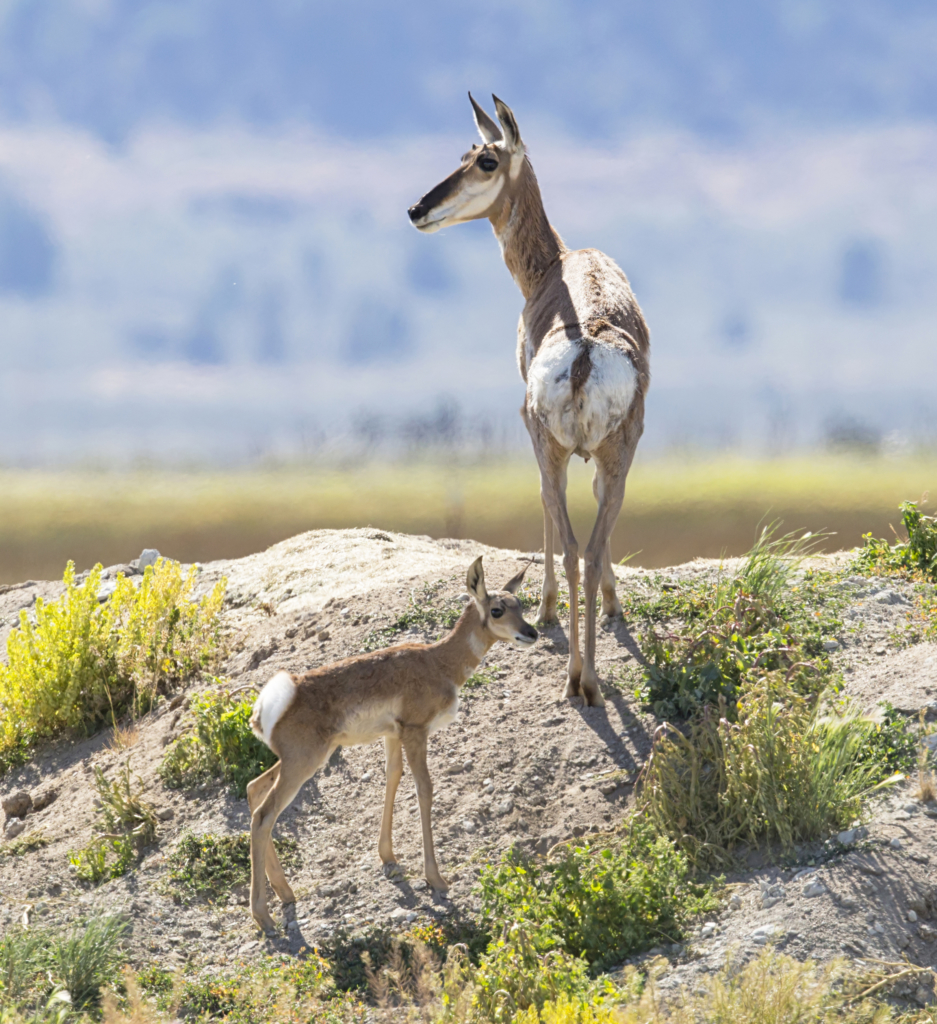
Pronghorn doe and fawn, by Beth Hamel
Our pronghorn are something very special. There’s a reason why the Bureau of Land Management’s mascot is a pronghorn, and why we here at Eastern Sierra Land Trust often feature photographs of them – this species is the fastest land animal in North America and is truly emblematic of the American West. They require vast open unfenced spaces to thrive, and they live mostly in sagebrush areas away from trees. The pronghorn’s huge eyes on the side of their faces and their need for wide open views are markers of their history this species evolved to spot and outrun North American cheetahs. But the wide open land that pronghorn still require today becomes rarer and rarer with every passing year even in the great big American West.
There are ways that you can help the pronghorn thrive here in our big backyard. First and foremost, you can make sure to drive slowly when you go out exploring. And if you see them, do not approach quickly. You can help them save energy for finding food and escaping real predators by not provoking them yourself.
Next, you can make sure any fences you construct are absolutely necessary. If they are, they should have a smooth bottom wire, with the bottom wire ideally raised 18 inches or more from the ground so that pronghorn can pass through the fence. Although pronghorn adults are physically capable of jumping, they will not jump and will instead go to great lengths to find a place to pass under a fence. Poorly-designed fences, then, can effectively stop a herd’s migration. Here’s an interesting fact: while pronghorn fawns will simply duck beneath a fence, adult pronghorn can run at full speed towards a fence, squeeze themselves under, and then keep going at full speed on the other side.
Another way to help pronghorn is by doing exactly what you’re doing. Through your membership with Eastern Sierra Land Trust, you are protecting wide open land for wildlife, and you help us work with conservation-minded ranchers who do the same. The landowners we work with work hard to keep fencing and development minimal and passable by migrating pronghorn.
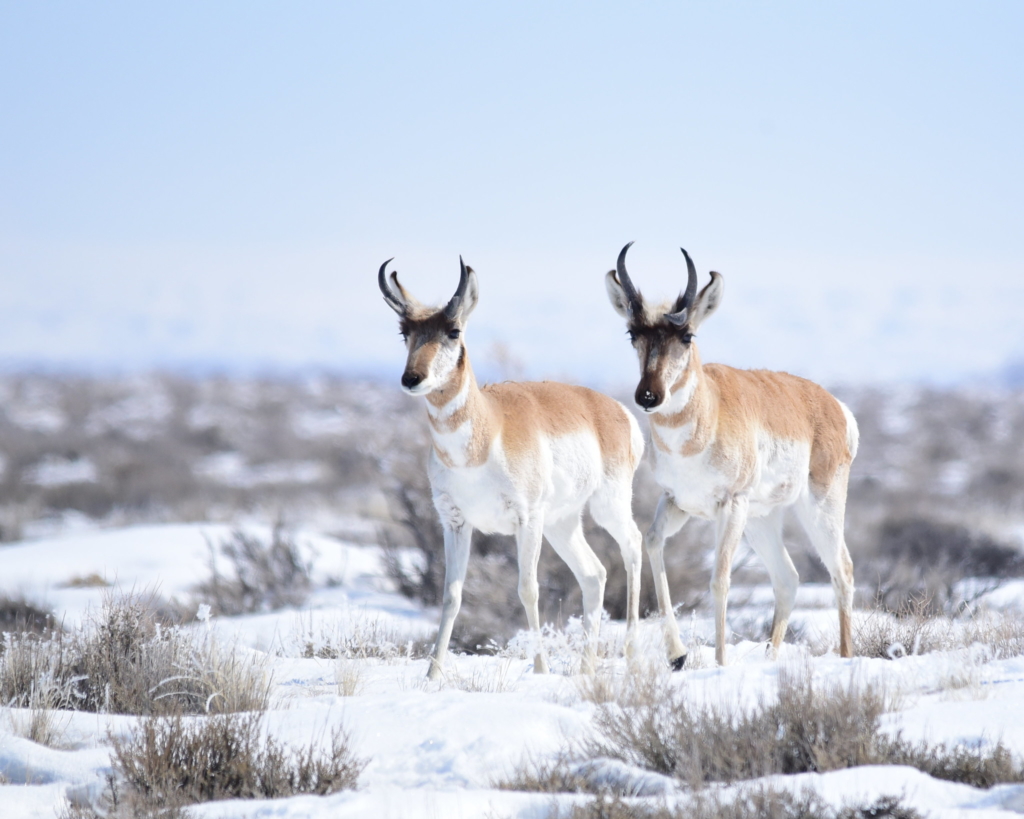
Photo by Tom Koerner.
So keep an eye out for this rare and incredible species! If you see them, see if you can spot any radio collars. Collars are a sign of California Department of Fish and Wildlife at work, monitoring the regional herd for its health and size. All of us agencies, landowners, and donor-dependent conservation nonprofits like Eastern Sierra Land Trust are working together to keep the herd thriving. Thank you for doing your part.
Want some more fun pronghorn facts? I thought so!
- Pronghorn horns aren’t antlers, but they are shed each year, unlike other animals with horns (e.g. bighorn sheep). They are the only animal with branched horns.
- In Spanish, pronghorn are called “berrendo”, which means “stained with two colors”. This is because of the distinct chestnut and white coloration of the pronghorn’s coat.
- Pronghorn can control the hair on their hindquarters to make it stick up and create a big white flash. This is an adaptation used to distract and avoid predators. Alarmed pronghorn can also alert other members of the herd to a threat using this visual cue.
- Some people refer to pronghorn as “antelope” but this is in fact not true. Pronghorn are not antelope. In fact, pronghorn are the only animal in their genus.
See you out on the land! Click here for the location of Bodie State Park, where you have the best chances of spotting our pronghorn.
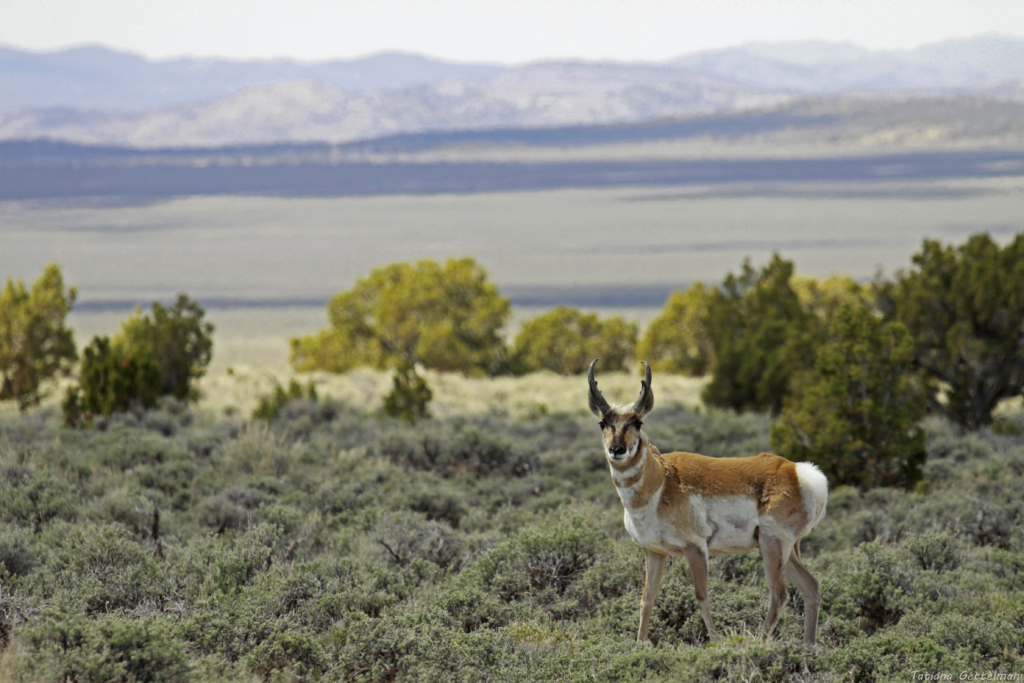
Pronghorn in central Nevada, by Tatiana Gettelman.


